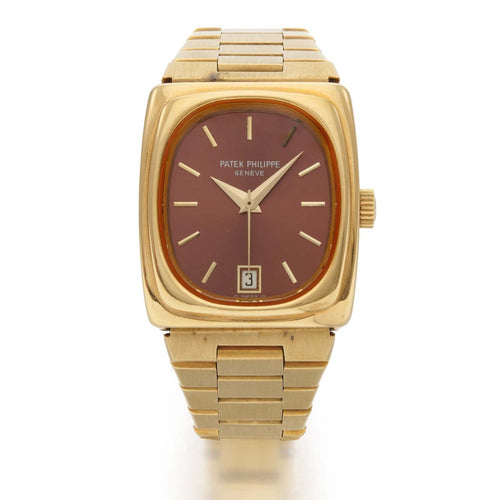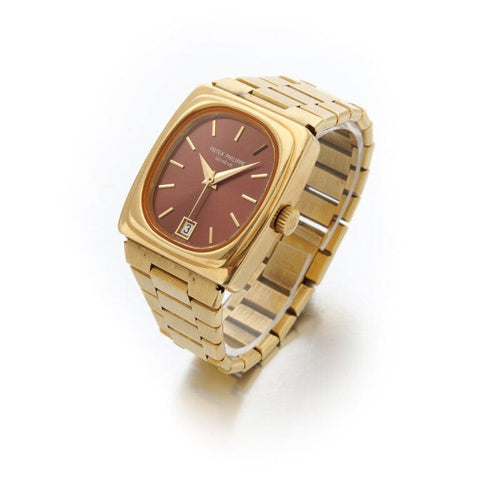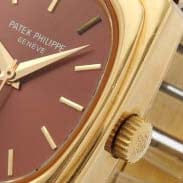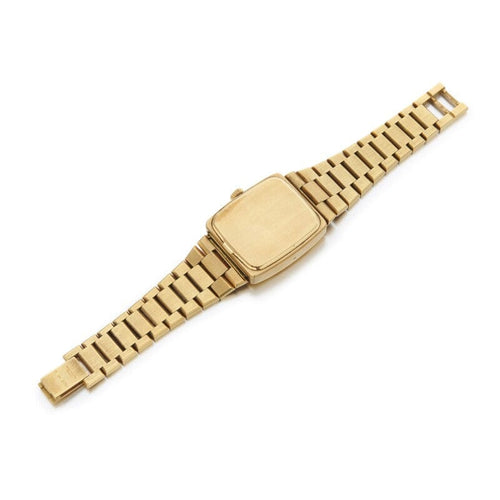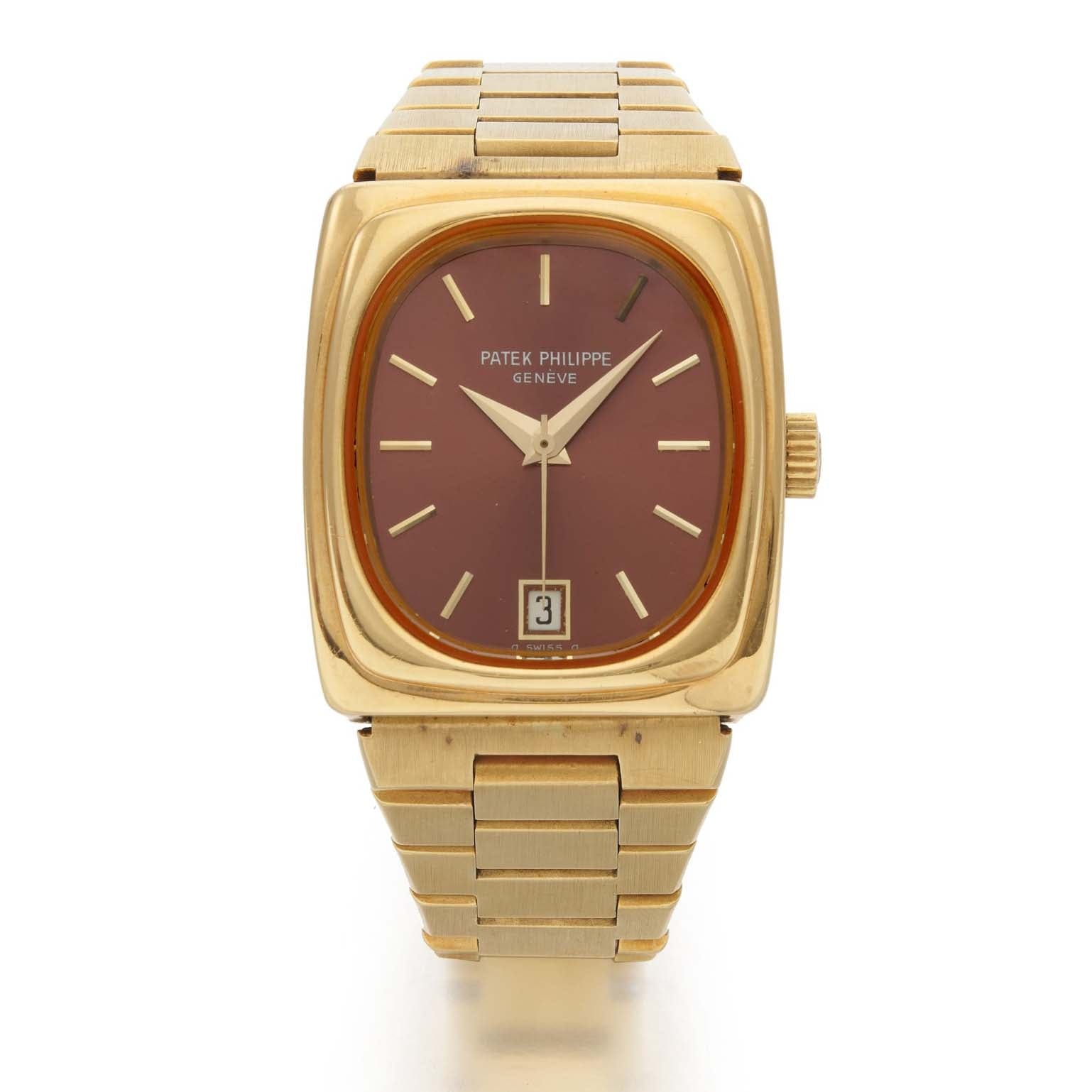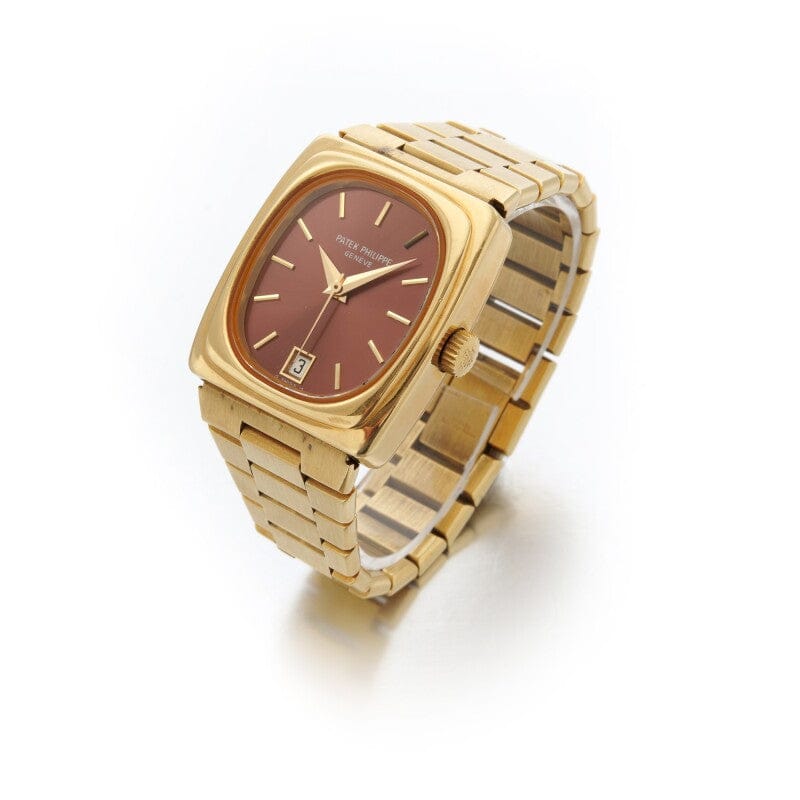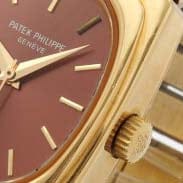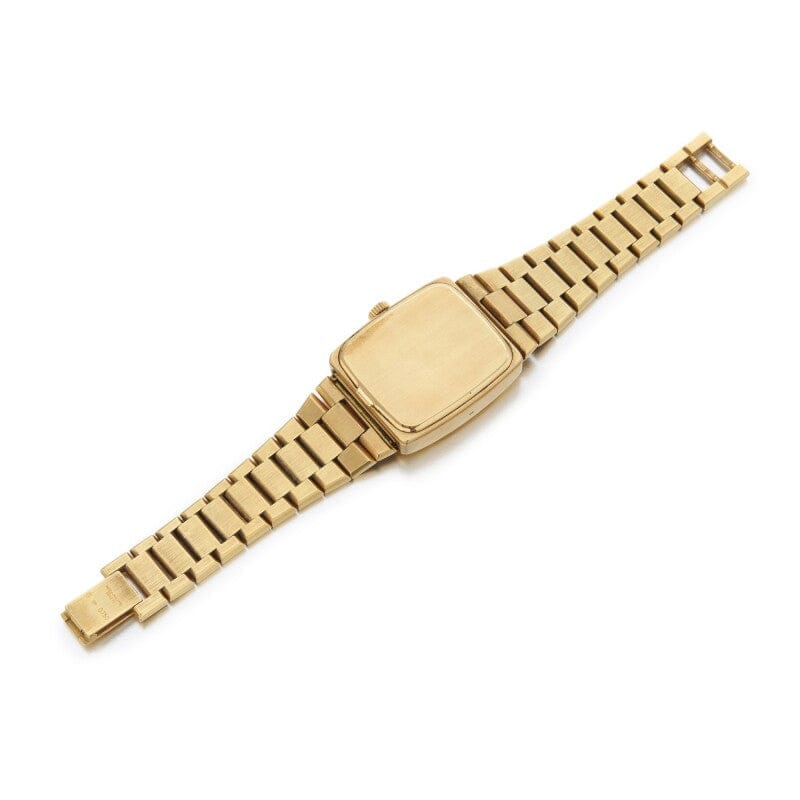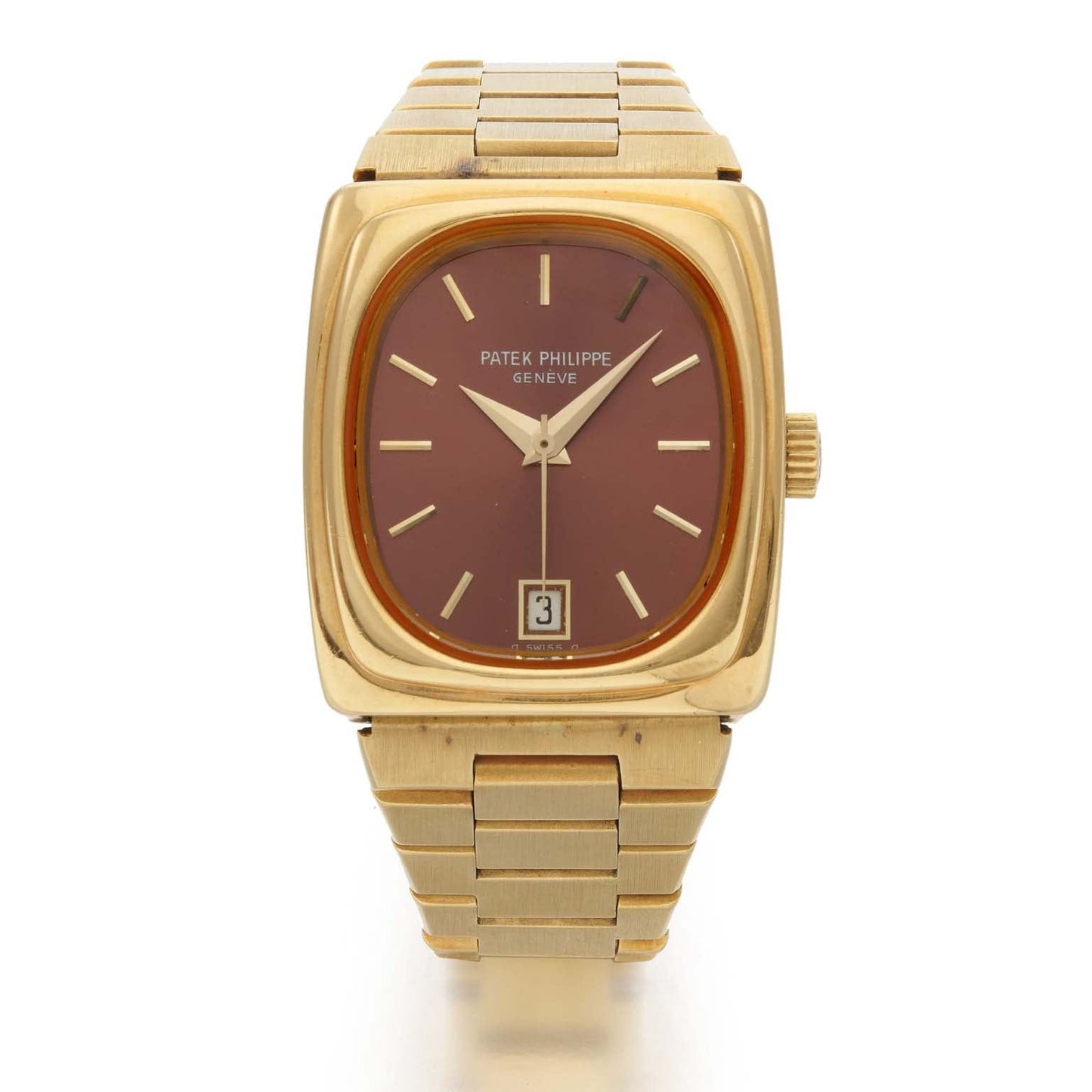
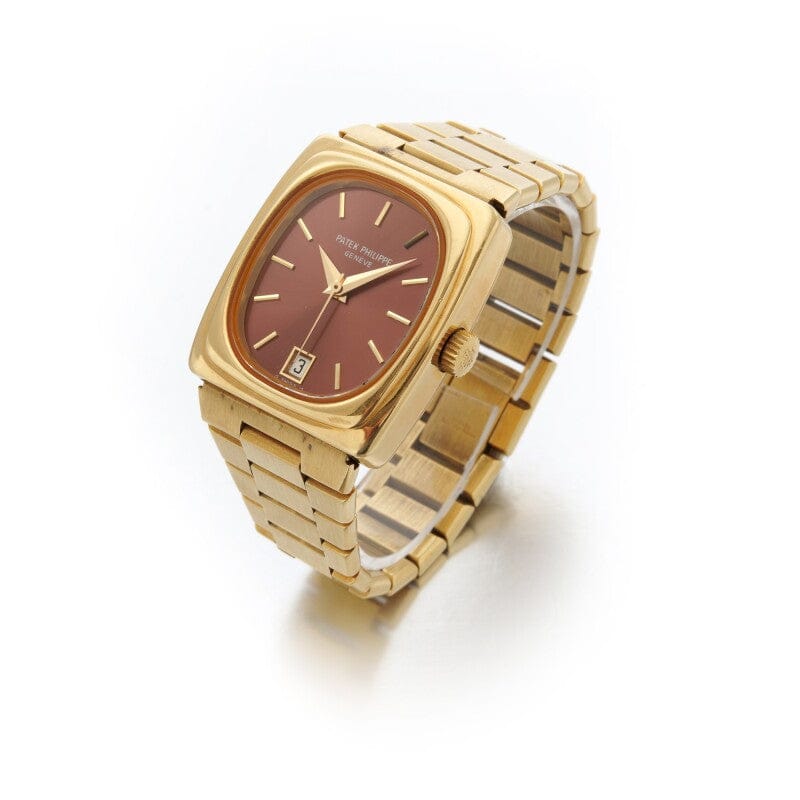
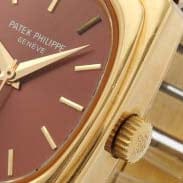
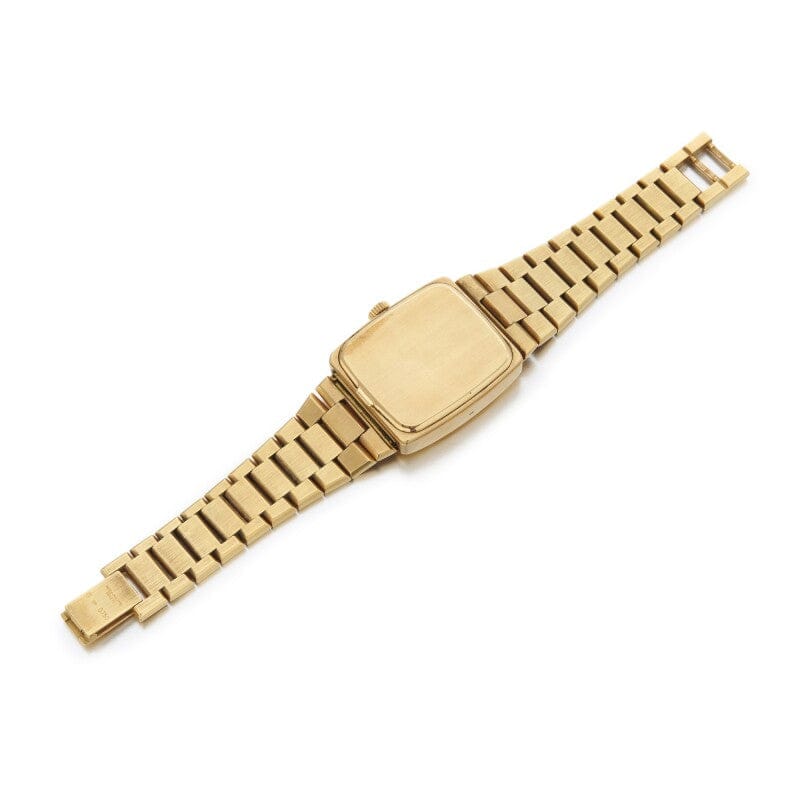
Information
- Brand: Patek Philippe
- Year: 1974
- Model: N/A
- Reference: 3603/1
- Calibre: BETA 21
- Movement: Quartz
- Material: 18ct yellow gold
- Features/complications: Rectangular case
- Dial: Ruby coloured ellipse dial with applied gold mirror polished baton hour indices and gold Dauphine hands with centre seconds and date at 6 o'clock
- Case dimensions: 33.5 x 37.5 mm
- Bracelet/strap: 18ct yellow gold bracelet, length approximately 185mm
- Accessories: Extract from the Archives
- SKU: 2885
Essay
The piezoelectric properties of quartz were discovered by Jacques and Pierre Curie in 1880, and subsequently the vacuum tube oscillator was invented in 1912.
An electrical oscillator was first used to sustain the motion of a tuning fork by the British physicist William Eccles in 1919. his achievement removed much of the damping associated with mechanical devices and maximised the stability of the vibration's frequency and the first quartz crystal oscillator was built by Walker G. Cady in 1921. In1923, D.W.Dye at the National Physical Laboratory in the United Kingdom and Warren Marrison at Bell Telephone Laboratories produced sequences of precision time signals with quartz oscillators.
The first quartz clock was invented in 1928 by Bell Labs, and due to the sheer size of early quartz clocks, were mostly restricted to use in labs as reference timekeepers. Quartz experimentation continued through the decades and by the early 1960s quartz movements had been miniaturized enough to allow for them to be used in marine chronometers. It was at this time, that the major Swiss watch brands caught wind of this new technology and approximately 20 maisons created the Centre Electronique Horloger (CEH) in 1962 in Neuchâtel. The purpose of the C.E.H. was to focus on researching, creating, and producing a quartz movement efficient enough, reliable enough, and accurate enough for the next generation of watchmaking.
After six years of research the first prototype, the Beta-1, was produced in 1966, using a 8192 Hz quartz oscillator mounted in an in-house integrated circuit. Shortly thereafter in 1967, the Beta-2 was produced and was awarded first prize at the "Concours Chronométrique International de l'Observatoire de Neuchâtel," setting a new record for accuracy over the test period of only .0003 seconds variation in rate per day (as opposed to the 3-10 seconds typical of wristwatch chronometers of the day).
The Beta-21 was created in 1969 and it was agreed by the 20 Swiss houses to produce 6,000 of these movements. Later that year, a few hundred of the Beta-21 watches were released at Basel, setting a new record at the Fair. The Beta-21 movement was accurate to 5 seconds per month, which was far superior to any automatic and manual-winding watch at the time. The design for the Beta-21 watches were also very characteristic of the era --they were generally thick, angular, and even chunky (partly out of necessity as the first generation of quartz movements were comparatively large.)

